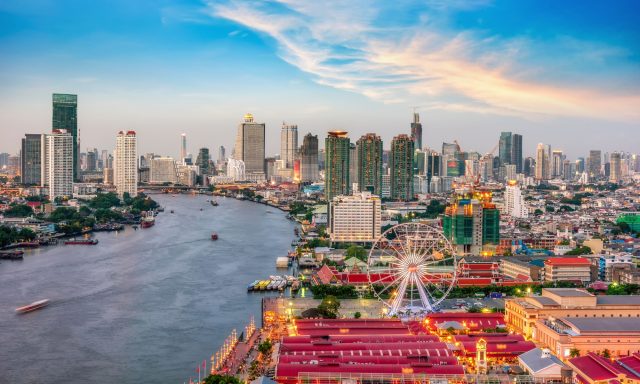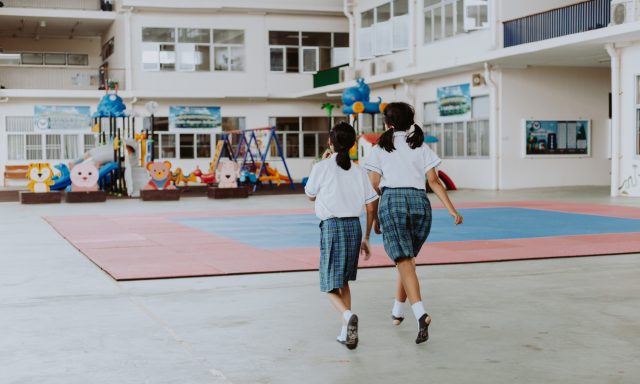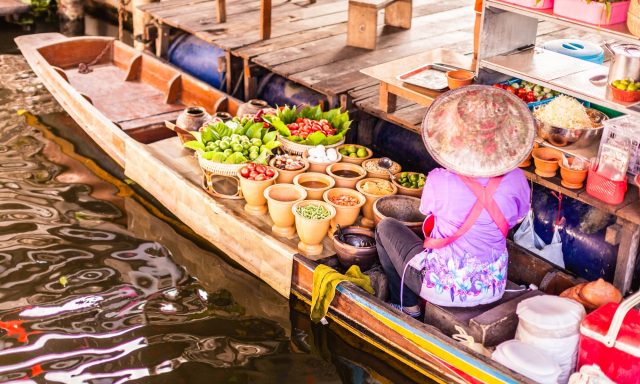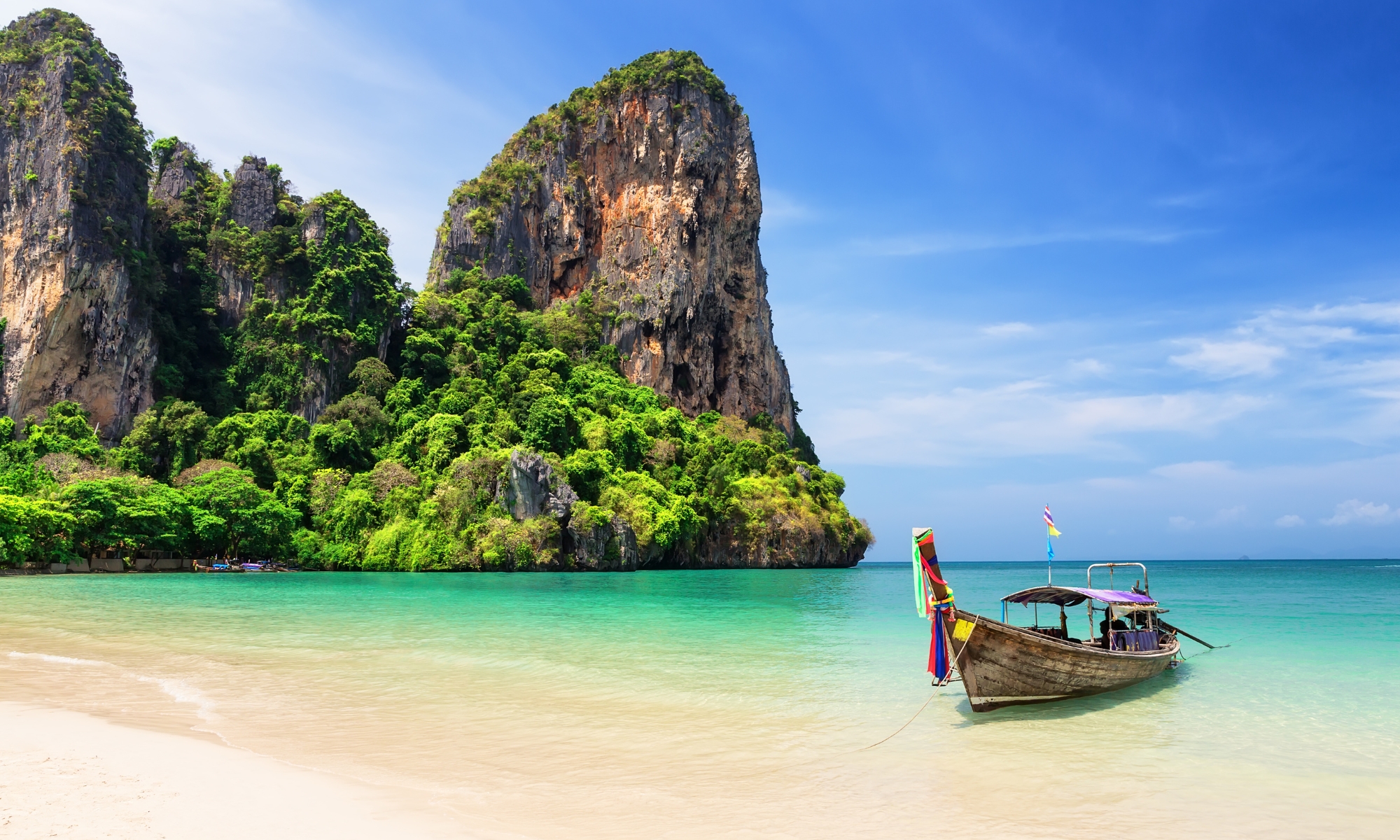‘Teach by the beach!’
That’s often the tagline for schools in Thailand wanting to recruit international school teachers. And while this conjures up enticing images of finishing school and heading down to a hammock by the shore, is that the reality of teaching in Thailand?
For some, it can be. Thailand is one of the top tourist destinations in the world – and with good reason. It ticks nearly all the boxes: great food, friendly locals, amazing beaches, and a rich and varied culture. But, as with so many places, travelling around Thailand and living there are not the same.
This guide will take you through the various teaching options at international schools in Thailand and explain what it’s really like to live in the kingdom.
Bangkok or bust?
Although the vast majority of Thailand’s international schools are in Bangkok, there are lots of other options. Bangkok is home to the best schools (and packages) in Thailand, but living in a city of 11 million people isn’t for everyone.

Up north, Chiang Mai has a number of reputable schools, while over on the Eastern Seaboard there are some excellent international schools around Pattaya and the province of Rayong. Down south, the island of Phuket also has some top-tier international schools. Most of these tend to follow an IB (International Baccalaureate) programme, often mixed with a combination of IGCSEs and/or a tailored national curriculum, usually linked to the English National Curriculum or the US curriculum.
Quality of life and cost of living when teaching in Thailand
Savings potential is often a key factor when considering teaching internationally. In Thailand, salaries for international school teachers typically start at around 80,000THB a month and at top-tier places they could be more than 200,000THB per month.

Outside of Bangkok, it’s possible to rent detached houses for as little as 10,000THB a month and utility bills are minimal. In the capital, the starting price is likely to be at least triple this amount, especially if you’re travelling as a family. Most schools will include a housing allowance. Global health insurance is usually offered by schools and the quality of international hospitals is high. Income tax rates vary but most teachers in Thailand pay 20-25%.
You won’t be saving as much as in the Middle East or Singapore, but you won’t be spending anywhere near as much either. Check out our Salaries and Benefits page to learn more.
Culture shock when teaching in Thailand
Thailand has a rich, varied and fascinating culture. Getting to understand and appreciate this can be one of the benefits of teaching in Thailand. It can also be frustrating for those who are new to it. Thais often have a laid-back approach to life (and time). If you plan to meet someone at 2pm and they arrive at 2.15pm, it’s no big deal. If you want to get paperwork done, allow yourself an hour longer than you think. Learning to take a deep breath when there’s an issue will help. Raising your voice or embarrassing others (losing face) is not acceptable.
Thais are very hospitable and welcoming, even more so if you can learn a few phrases. In major cities, learning some Thai will help, but many Thais have a functional level of English. Outside of these spots, learning a little Thai will be useful, and greatly appreciated. Although Thai is a tonal language and has its own alphabet, it’s also a logical language (none of those idiosyncratic spellings that English employs) and the basics are pretty straightforward.
Exploring Thailand as a teacher
When you’re not working, Thailand has some incredible attractions to visit. Split up into four regions (north, north-east, central and the south), each has its own sights, food and activities.

In the north, you can visit Chiang Mai, Chiang Rai or the remote-but-stunning Mae Hong Son. Central Thailand is home to the national parks of Kanchanaburi and the capital Bangkok, while down south there are world-class beaches and diving options around Phuket and Koh Phi Phi. Wherever you explore, be aware that Thailand’s roads can be dangerous places. Always wear a helmet on a bike, and expect the unexpected….
…and the rest of Southeast Asia is close by
Thailand shares its borders with Myanmar, Laos, Cambodia and Malaysia. Beyond that, it’s easy to get flights to Vietnam, Singapore, the Philippines or Indonesia. Thailand has a lot of national holidays and international schools recognise some of them; that means there are often long weekends when trips to nearby countries are great options. Looking farther out, even the Maldives is only four hours away.
Dive in and experience all of Thailand
Wherever you stay and wherever you teach in Thailand, it’s important to immerse yourself with the country’s culture. Try that unusual-looking street food, go to that Muay Thai contest, learn some phrases, and your experience will be enriched immeasurably.

Thailand is still a developing nation in many ways, so there will also be chances to make a difference within the community. Your school will likely work with local charities or NGOs, which is a great way for students to learn empathy, and also a great chance for you to understand what life is really like for many Thais.
Overall, Thailand has a range of international schools with respectful students (who will mainly have English as their second language). You’ll be able to focus more on teaching rather than classroom management when in school, and when out of school you’ll have opportunities to explore the most amazing of kingdoms.




